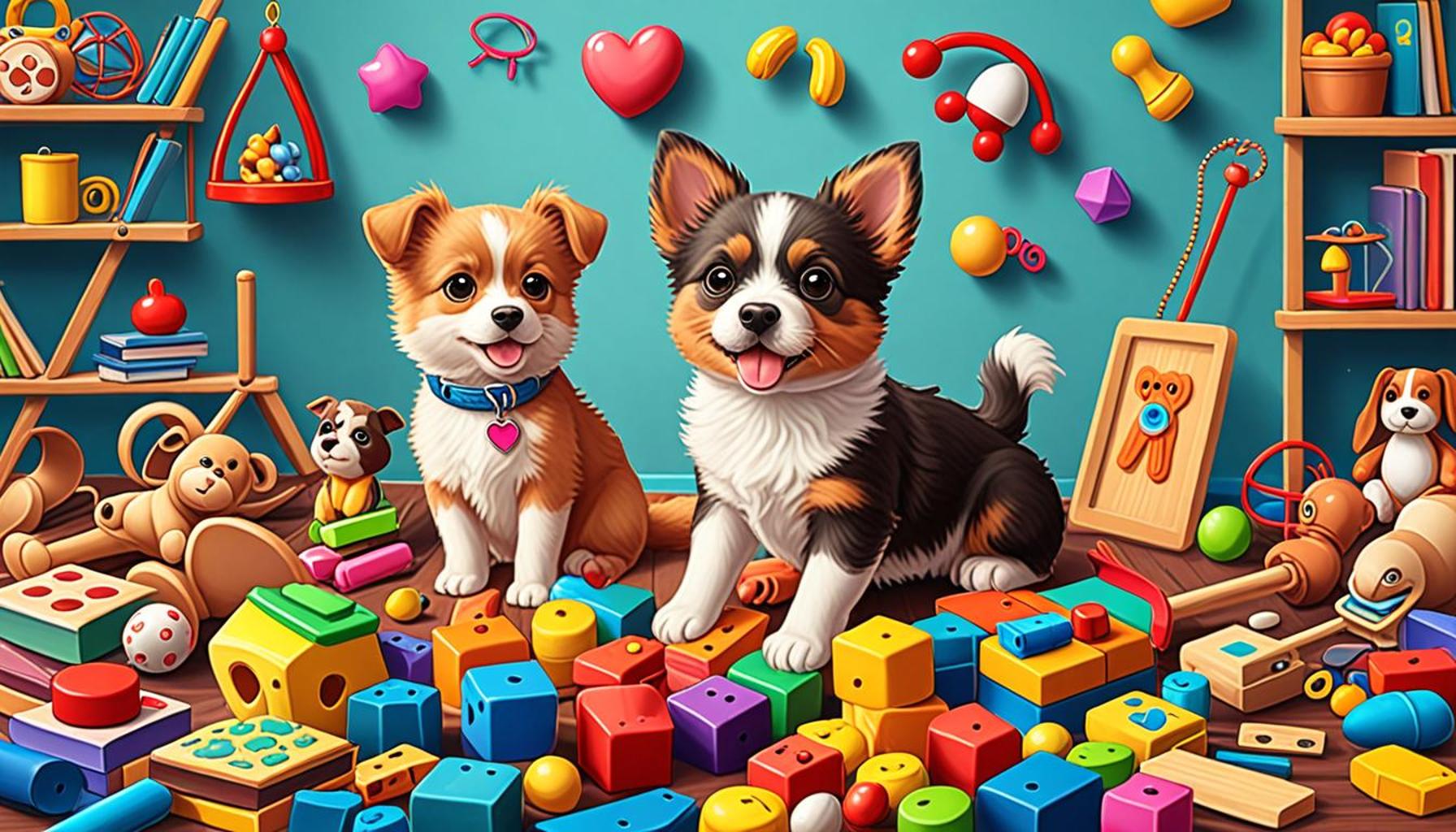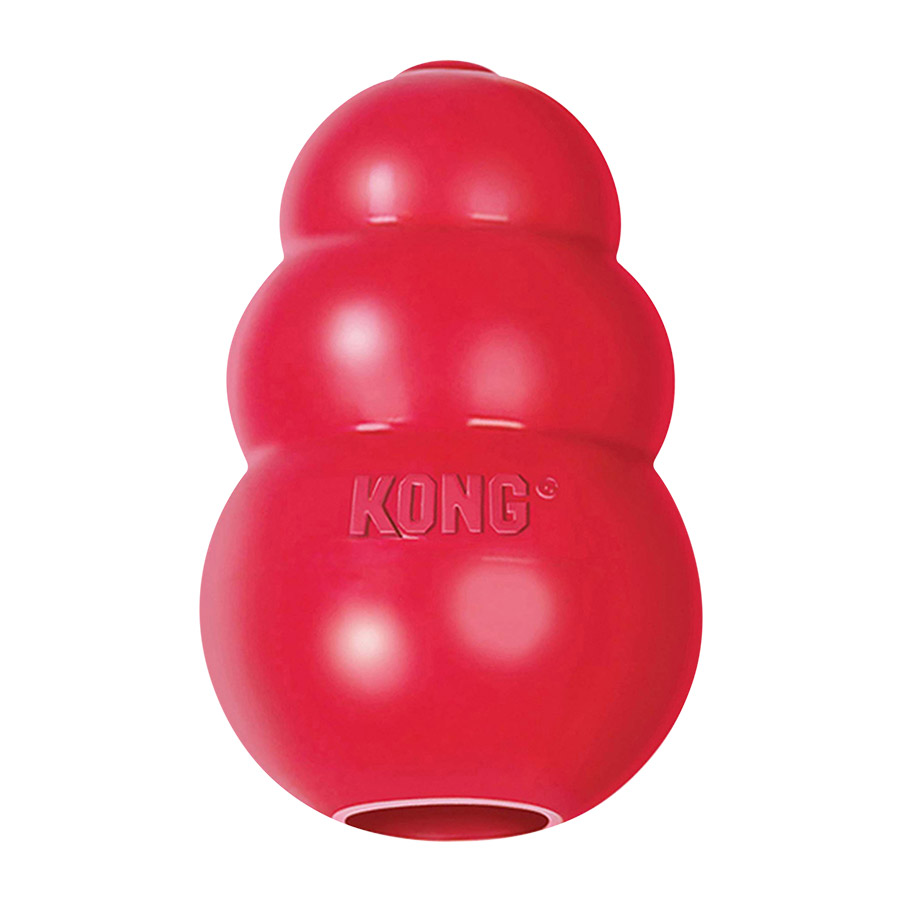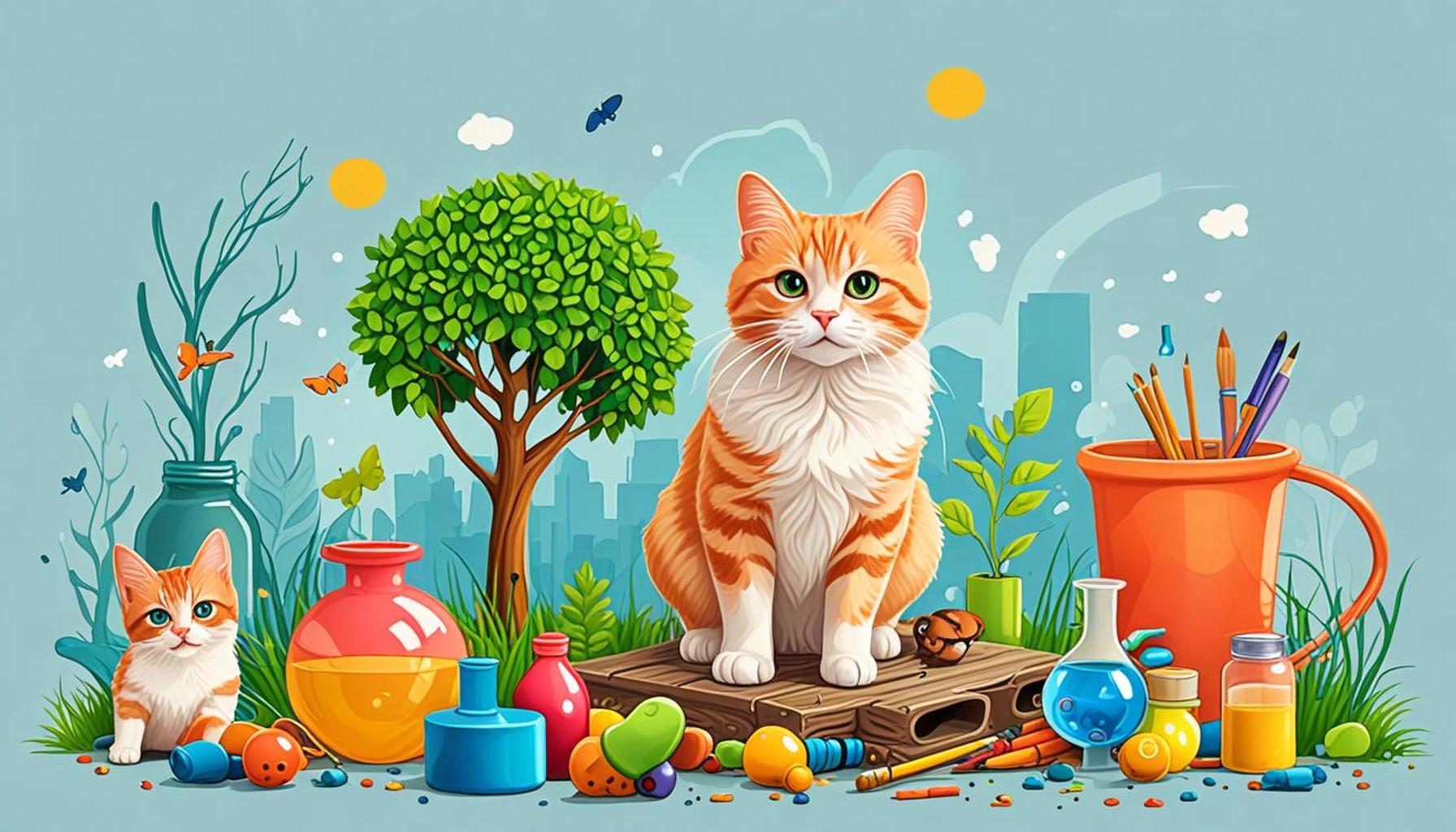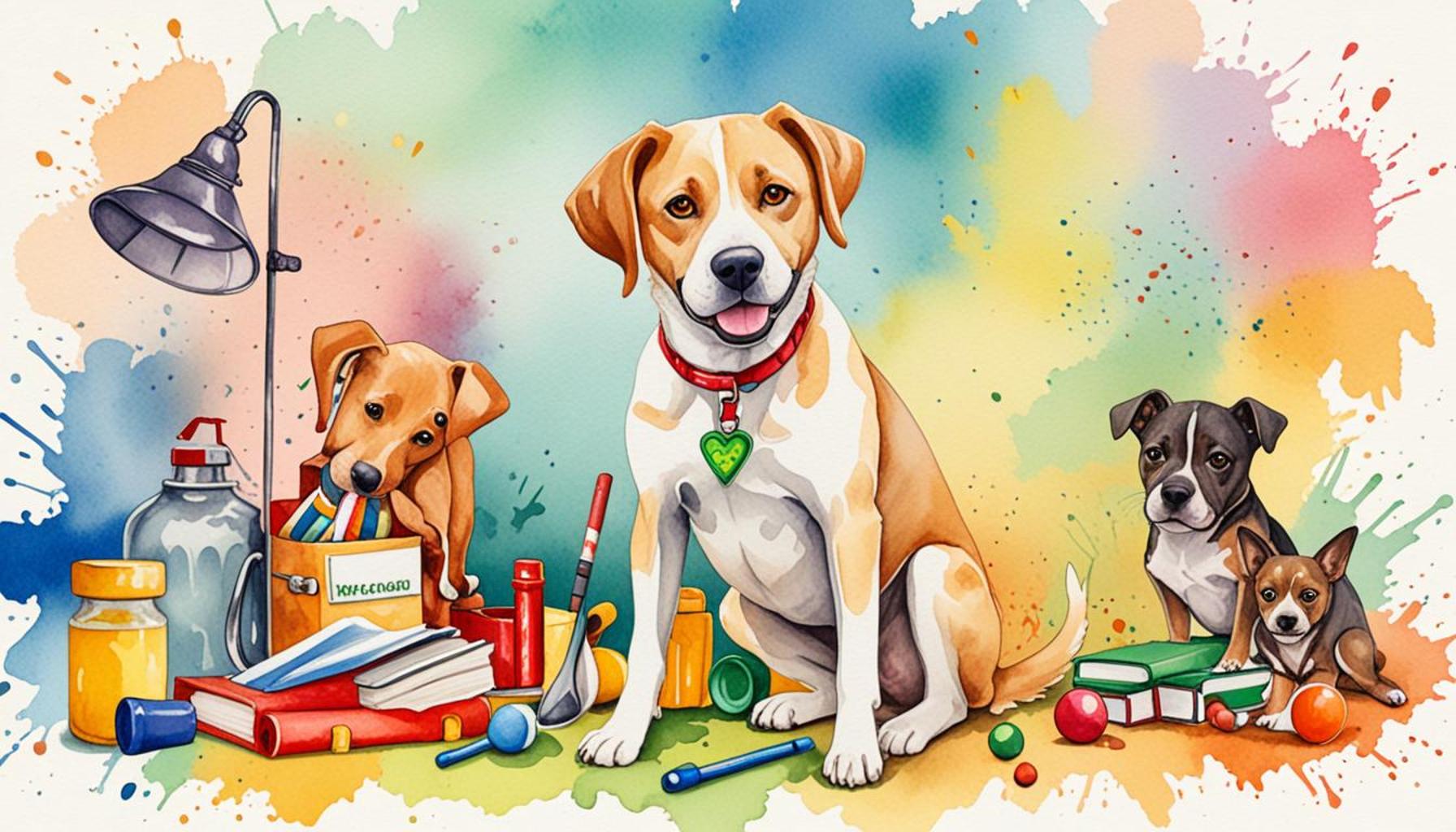How to Use Toys and Games to Enhance Learning in Pets

Engaging Your Pet’s Mind through Play
Wondering how to make playtime more educational for your furry friends? Integrating toys and games into your pet’s routine can significantly enhance their learning and overall well-being. It’s not just about keeping them entertained; it’s about challenging their minds in novel ways that foster development and improve their quality of life.
Research shows that play stimulates mental development, especially in pets that thrive on challenges. Engaging your pet in interactive play can boost their cognitive functions, leading to better behavior and a happier, healthier lifestyle. Here’s how you can use toys and games effectively:
- Interactive Toys: Choose toys that require problem-solving, such as puzzle feeders. These are designed to make pets work for their food, encouraging exploration and critical thinking. For example, dogs may have to nudge, roll, or lift elements to get treats, whereas cats might enjoy toys that hide treats and are activated by their paw movements.
- Training Games: Engage in activities like fetch or hide-and-seek to reinforce obedience and recall. Not only does this model desired behavior, but it can also lead to exciting bonding moments between you and your pet. Incorporating commands and tricks can further elevate these games, encouraging your pet to think and respond quickly.
- Social Play: Facilitate interactions with other pets to build social skills. Pets are social creatures, and promoting playdates can help them develop communication skills, reduce anxiety, and enjoy healthier relationships. For instance, visiting local parks where other pets gather can be beneficial and can be a captivating experience for both you and your pet.
Incorporating these elements can yield impressive results. For instance, many pet owners in Nigeria are utilizing affordable local crafts as enriching toys. Many artisans across the country create unique products from traditional materials like textiles and palm fronds, which can serve as stimulating playthings for pets. This not only supports local businesses but also provides enriching materials that are often more engaging than mass-produced items.
As you dive deeper into this topic, keep in mind that play is a crucial component of a pet’s life. By understanding and applying educational games, you can foster a stronger bond with your pet while enhancing their cognitive abilities. By choosing the right activities, you will not only keep your pet entertained but also contribute to their overall mental and physical well-being. Seek out local resources and communities that promote pet-friendly activities and toys, which can enrich both your life and your pet’s.
In conclusion, the journey of engaging your pet through play is not just a trend; it’s an ongoing commitment to their happiness and health. Discover the wide array of options available, and always stay curious about new and interesting ways to interact with your beloved furry companions.

RECOMMENDED: Check out this similar article
Types of Toys and Games that Promote Learning
Understanding the right types of toys and games is crucial for enhancing your pet’s learning experience. With a variety of options available, pet owners in Nigeria can select from both traditional and modern varieties that cater to their pet’s specific needs. Below, we explore several categories of toys and games that can effectively stimulate your pet’s mind:
- Puzzle Toys: These toys are designed to challenge pets and stimulate their problem-solving skills. Brands like Nina Ottosson offer engaging puzzles that require pets to figure out how to retrieve treats hidden inside. Such toys not only keep their minds sharp but can also help curb boredom-related behaviors often seen in pets left alone for extended periods.
- Fetch and Retrieve Toys: Games involving fetch are popular among dog owners and can significantly improve a dog’s recall and obedience. Investing in toys like frisbees or balls that are specifically made for this purpose can enhance your dog’s physical fitness while providing mental stimulation. For added excitement, consider using brightly colored toys that are easy to spot in various environments.
- Interactive Games: Utilizing technology can enhance the gaming experience for pets. Devices that dispense treats when pets perform certain actions (like pressing a button) can generate curiosity and sustained engagement. For example, automatic ball launchers encourage pets to chase and retrieve with a little less involvement from owners, enabling them to play freely while still stimulating their minds.
- DIY Toys: Creativity comes into play with the rising trend of making DIY toys using everyday materials. Simple household items like old tennis balls, cardboard boxes, or even bottles can be transformed into engaging toys. For instance, you can create a treat-believing puzzle by cutting small holes in a plastic bottle and filling it with your pet’s favorite treats, encouraging them to work for their rewards.
Incorporating these toys and games into your pet’s routine can dramatically elevate their learning experience. Not only do they benefit from mental stimulation, but they also gain physical exercise, which is essential for maintaining a healthy lifestyle. In Nigeria, where craft and creativity often meet functionality, consider exploring local markets that offer handmade toys tailored for pets. These products not only foster engagement but also support local artisans and communities.
Engaging your pet with the appropriate toys encourages exploration, creativity, and learning. As you introduce these elements into your pets’ playtime, keep track of how they respond and adjust your approach as needed. The goal is to make learning fun and enjoyable, fostering both cognitive growth and strong bonds between you and your beloved companion.
| Category | Description |
|---|---|
| Cognitive Development | Toys that challenge problem-solving skills improve pets’ cognitive function. |
| Physical Exercise | Interactive toys encourage movement, promoting physical fitness and agility. |
| Social Skills | Group games foster bonding and improve interaction with other pets and people. |
| Behavioral Training | Toys can be integrated into training regimens to reinforce positive behavior. |
Incorporating toys and games as learning tools for pets is a gateway to unlocking their potential and enhancing their abilities. Through challenges like puzzle toys, dogs and cats engage in cognitive tasks that sharpen their problem-solving skills. This type of game not only stimulates their minds but also keeps boredom at bay, which is crucial for a well-adjusted pet.Equally important is the role of physical activity. Engaging pets with toys encourages them to leap, chase, and engage in play, thereby promoting better physical health. It’s not just fun; it’s vital for physical fitness and agility, leading to a more active lifestyle.Moreover, social skills are enhanced through group play. By playing together, pets develop better interpersonal skills, build confidence, and form stronger bonds with both other pets and family members. The integration of toys in these settings creates an enriching environment.Lastly, toys are invaluable tools for behavioral training. They can be strategically used to reward good behavior, enhancing training effectiveness and ensuring a positive association with learning. These learning experiences, facilitated by engaging toys and games, pave the way for well-rounded, intellectually stimulated pets eager to learn and adapt.
YOU MAY ALSO LIKE: Read read another article
Benefits of Play and Interaction
The impact of playtime and interactive games transcends mere entertainment for pets. Engaging with toys and games not only offers enjoyment but also promotes essential skills that are vital for your pet’s overall development. In Nigeria, where many pet owners seek to create a stimulating environment for their furry friends, understanding these benefits is crucial.
Enhancing Cognitive Function: Research indicates that mental stimulation through games and puzzles can lead to improved cognitive functions in pets. For instance, regular interaction with puzzle toys can help dogs and cats sharpen their reasoning skills. As pets learn to associate actions with rewards, they develop problem-solving abilities, making them more adaptable and intuitive. This cognitive engagement is particularly essential during a pet’s formative years, as it can help prevent behavioral issues later in life.
Strengthening Bond Between Pets and Owners: Utilizing toys and games is not just about keeping pets busy; it’s also an opportunity for bonding. Engaging in activities such as fetch, training sessions, or simply cuddling with a favorite toy enhances your connection with your pet. Research suggests that joint activities can increase the affection pets feel toward their owners, fostering trust and loyalty. For example, teaching a dog to retrieve a specific toy or guiding a cat to play with a laser pointer creates shared experiences that deepen your relationship.
Physical Health Benefits: While mental stimulation is crucial, physical fitness should not be overlooked. Many toys encourage exercise, promoting a healthy lifestyle for pets. For instance, tug-of-war games with rope toys can provide an excellent workout, enhancing muscle strength and coordination. In Nigeria, where outdoor space may be limited for some pet owners, interactive toys that encourage vigorous indoor play can be a practical solution to ensure pets remain active.
Socializing Through Play
Many pets benefit from social interaction, whether with humans or other animals. Engaging in group games or visiting dog parks can enhance your pet’s social skills. Activities like chasing a ball alongside other dogs help them learn communication and play strategies that are vital for their development. In Nigerian communities, where pet ownership is becoming increasingly popular, organizing playdates or group walks can foster a sense of camaraderie among pet owners while benefiting the animals.
Customization for Individual Needs: Not all pets are the same; hence, customizing playtime according to your pet’s unique personality and preferences can yield better results. While some dogs may find joy in interactive ball-pursuing games, others might prefer quieter toys. For example, shy or anxious pets may feel overwhelmed by loud or rapidly-moving toys, so opting for soft chew toys or gentle tug ropes might be more appropriate. Understanding your pet’s preferences can lead to a more enriching experience that encourages even greater learning and growth.
As you cultivate your pet’s learning through toys and games, remember to continually assess their engagement. Observe how they interact with various types, and allow their preferences to guide your choices. The journey of enhancing learning in pets can be significantly rewarding and enlightening for both the pet and the owner, transforming the mundane act of play into a valuable educational experience.
YOU MAY ALSO LIKE: Read read another article
Conclusion
In conclusion, the importance of incorporating toys and games into the lives of our pets cannot be overstated. These engaging tools do much more than entertain; they serve as fundamental resources for enhancing cognitive skills, fostering physical health, and nurturing the bond between pets and their owners. In Nigeria, where pet ownership is on the rise, understanding how to effectively utilize playtime can significantly enhance the well-being of our animals.
Customized play experiences that cater to an individual pet’s personality help foster deeper connections and promote healthy socialization skills. Collaborative activities not only facilitate learning but also cultivate trust and loyalty, creating a warm environment for both pets and their humans. Moreover, by integrating regular cognitive challenges and physical exercises with appropriate toys, pet owners can ensure their companions remain mentally sharp and physically fit, regardless of available space.
As you embark on this journey of play, it is vital to remain attentive to your pet’s preferences and responses. Regularly updating play strategies and exploring new toys will keep the experience fresh and exciting, further enhancing the learning process. Ultimately, transforming play into an educational tool paves the way for a thriving, harmonious relationship that benefits both pet and owner. Embrace the adventure of discovery, and watch as your pet flourishes in a world of play-based learning.


